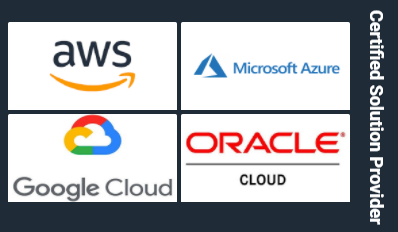Several studies have found that incorporating well-planned DevOps into a project can have a positive effect. Some have found that developers in a DevOps environment spend up to 22% less time on unplanned work and reworking developed features.

This article will run you through several key factors of DevOps. It will ensure you create an efficient development environment for your software teams. It will focus on incorporating DevOps practices and the benefits that it brings to your Dev and Ops teams’ life.
What is DevOps?
Over time, Agile methodologies and Lean approaches have become more ingrained. At the same time as the Agile and Lean methods matured, development and operations began to collaborate more. This combination of “Dev” and “Ops” then started to become one process.
In short, DevOps is when developers and operations managers work together through a product’s lifecycle. Through this, they can create the best service possible as each side considers the others’ needs.
Success Factors in Implementing DevOps
There are several ways in which one can ensure they are producing a successful service when implementing DevOps. Some of the more important ones are below:
1. KPIs
Key performance indicators should focus on the goal of project completion. They should also ensure good service maintenance. That way, they will be able to inform you of where problem areas of your processes are before they become larger issues.
As DevOps is a software development method based on Lean and Agile practices, self-improvement of the team is always going to be a priority. Also, many of the methods of measuring KPIs are going to come from the proven practices learned through switching to Lean and Agile.
Examples of the KPIs you might want to measure include:
Mean time to defect: The average time between creating defects and them discovered
Mean time to failure: The average time between encountering defects that will (or do) cause a system to fail
Mean time between failures: The average time between two separate failures in a system
Mean time to resolve: The average time to resolve issues once they become clear in a service
2. Cross-Functional Teams
These are teams that have a wide range of skills upon creation. Instead of having separate development teams, QA teams, and design teams, you produce teams that have at least one member of each role in them.
Cross-functional teams allow their members to be at the forefront of knowledge. Members can assist others in that team when questions need answering and communication needs to occur fast.
If a developer has an issue with a design, they can ask the designer who focused on their product. They can then expect them to understand the problem and be able to solve it then and there.
When teams are utilizing DevOps strategies like this, members can learn from one another much faster. They are also able to connect in a way that allows for a greater understanding of the product by the whole team.
3. Automation
Systems all over a development process can often become overwhelmed. This is regardless of if they relate to testing, customer service, or other areas. For that reason, automation is able to prevent the project from overwhelming those working on it.
These days some of the best DevOps practices make use of cloud-based tools. These automate as much of the development and support process as possible.
Doing so removes the possibility of user error and can increase the productivity of a team. Also, much of this automation can occur using specialist software tools.
4. Security
When using DevOps, you should be ensuring the whole environment you work in is secure. By working together, developers and operations experts can produce a holistically secure environment. They can do this rather than only focusing on separate sections of the network.
With DevOps, the entire concept of security is also pushed earlier in the development timeline. This means you can install and test security tools and concepts from a much earlier time. By the time you finish the software, you can assume all the development teams have installed all the mandatory security updates.
As you move forward, the team will also be able to keep up with ongoing changes in how you handle security. You can then handle future patches and other updates with the ongoing project lifecycle.
5. Project Lifecycle and Service
The Operations section of DevOps focuses not only on the “now” but also on what happens later. As the project comes to fruition, the development team will start to look at service maintenance. This is because they will no longer need to focus on application creation.
This means the team will be able to maintain an ongoing relationship with its customers moving forward.
The product can continue to improve, gaining features and increasing in functionality. This system of improvement also allows the creators to build an MVP for release early and allow for the product to evolve moving forward.
After you release the product, you should also have a good understanding of what your deployment plan is. For example, whether you will be aiming for continuous delivery or a continuous deployment plan.
Which you choose will relate to what your ongoing plans for product support are. Other factors include your delivery method for updating your product, as well as the details of the product itself. While most DevOps teams will want to aim for continuous deployment, sometimes it is not a viable choice, so ensure you know your options.
What Next?
You should now have a much more comprehensive understanding of how using DevOps practices will enable your teams to reach success easier.


